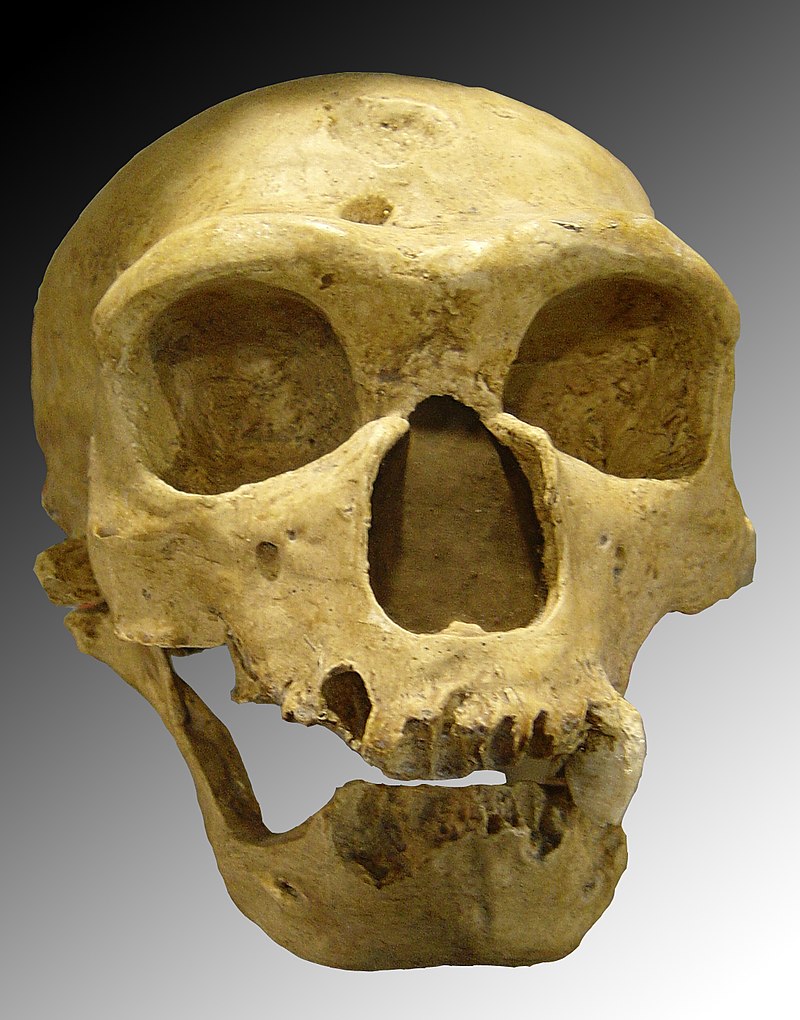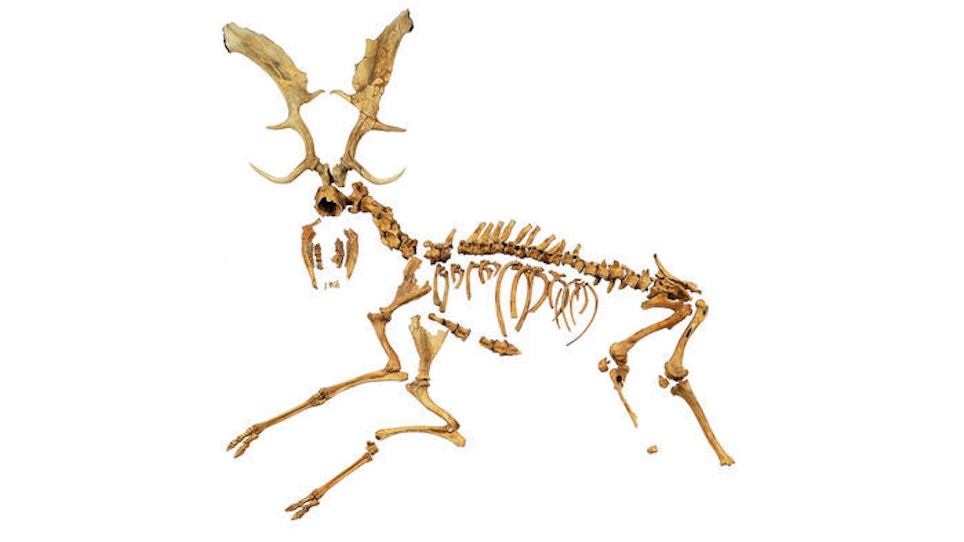An 11-millimeter circular wound in the pelvis of an ancient deer has been recovered by archaeologists in Germany. After ruling out a fight with another male deer or a puncture wound made by the tooth of a carnivore, the obvious cause can only be attributed to a human tool. And the only human species in Germany at the time of the deer’s death, about 120,000 years ago, was the Neanderthal.
According to ScienceMag.org, “archaeologists have discovered ancient Neanderthal spears in both the United Kingdom and Germany, but they weren’t sure how these hunters actually used them. Did they throw them at their prey from long distances? Or did they chase down the animals and stab them at close range?”
These spears have been recreated by scientists who have used the weapons to try and duplicate the injury found in the ancient deer’s pelvis.

In 1908, the first nearly complete skeleton of a Neanderthal was found at La Chapelle-aux-Saints in France. Because he suffered from a degenerative joint disease, this skeleton was originally reconstructed as stooped over. This slouching posture came to exemplify our image of Neanderthals, but it was later found that this reconstruction was incorrect. Photo: Luna04 (Wikipedia)
Researchers reported in Nature Ecology & Evolution, the Neanderthals had to, “thrust the weapon upward at the animal’s hip while standing close to it.” So this ancient deer was likely taken by Neanderthals at close range, implying the Neanderthals were stealthy enough to get within close proximity of deer. Or, perhaps, the animal was hit while lying down.
Scientists have traditionally thought that there were stark cultural and behavioral differences between Neanderthals and Homo sapiens,” writes PhD candidate Annemieke Milks for The Conversation. “But recent discoveries have clarified that Neanderthals were more sophisticated than originally thought. For example, they cared for the vulnerable, buried their dead and engaged in symbolic behaviors.”
Interestingly, while this latest report suggests Neanderthals may have hunted at close range, this doesn’t rule out the likelihood that this species was also dependent on throwing spears to kill wild game.
It’s still unclear whether Neanderthals used spears for thrusting, hand throwing or both.
According to Milks, “the remains of a Neanderthal’s left arm bone shows damage that matches trauma resulting from habitual throwing. This means that the possibility that Neanderthals designed throwing weapons remains strong, but we don’t know for sure.”
She adds, “we don’t know how far Neanderthals would have been able to throw spears, but some recent human groups were capable of accurately throwing spears to distances as great as 30 to 50 metres.”
The 120,000-year-old deer skeleton was collected from the known Neanderthal site of Neumark-Nord in Germany. The deer was about six years old when it died. Neanderthals are the closest extinct human relative to Homo sapiens. The Smithsonian National Museum of Natural History describes Neandethals’ bodies as “shorter and stockier than ours,” an adaptation to living in cold environments. They lived in Europe and southwestern to central Asia from about 400,000 years ago to as recently as 40,000 years ago.






